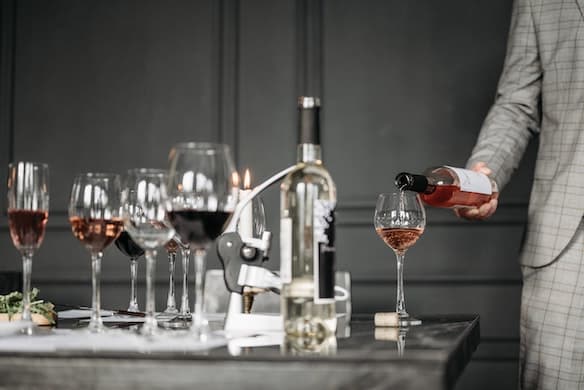What Does Tasting 100 Wines a Week Feel Like?
Ever try to read a book, write a paper, and communicate with clients while tipsy? It is actually much harder than you might think.

As part of my job, I taste a lot of wine every week. My best guess is an average of 100 different wines. Sometimes it’s double or triple that; only rarely does the number drop below 50.
One of the benefits of that much exposure is the ability to compare and rank what I taste. It allows me to quickly assess where a wine lands on a quality spectrum and if it offers a high or low level of value relative to its price.
While in a lot of ways this is the best part of working in wine, it can also cause a bit of discomfort.
Maybe not so obvious is what could be called the ick factor: Not all wine is very good. I have to taste a lot of duds, as well as wines not geared toward my particular palate, in between the good, the great, and the rare, truly outstanding bottles.
The good thing is that wine is in its heyday: The quality is higher than it’s ever been.
Also not obvious is the pain associated with wine tasting. Grapes and most wines contain a lot of acidity. It’s the balance between the high acid and the high accumulation of sugar that makes grapes such a perfect vehicle for winemaking.
Continuous exposure to acid, whether in wine, lemons, or even sour candies is eventually going to lead to irritation of the mouth. Your teeth start to vibrate; your soft tissue can tear; and your tongue can feel like it’s on fire. Not pleasant. For some — thankfully, not me — acid reflux can also be a real issue.
With red grapes, you also have to combat the accumulation of excessive tannin. Tannins are a natural compound found in the skins, seeps, and stems of grapes. You can also find them in walnuts, coffee, tea, and oak barrels, among many other foods and beverages.
Tannins bind to the protein in your saliva and literally wick the moisture away from your tongue, teeth, and lips, causing a drying, sometimes astringent sensation. They can also build up, meaning the more reds you taste, the more tannins are left in your mouth.
Most white grapes are made with as little exposure to tannins as possible, through a quick press of the juice away from the skins before fermentation. Red wine, though, is often made to maximize the extraction of tannins. They give a red wine mouthfeel and texture. When coupled with acid and alcohol, they build the structure of a wine — as in, the overall physical sensation of the wine on your palate (as opposed to the flavors).
Food can help buffer their drying effects, which is why it’s always recommended to eat with wines like Borolo, a notoriously high-tannin wine. The problem when tasting, though, is that food also changes our perception of wine and is thus usually avoided.
Finally, there’s the head game that can come with tasting. Even when spitting everything, which is required during marathon sessions, alcohol is absorbed through the soft tissues in our mouths. It means that try as you might, you can very easily become groggy.
While this may sound like a relief to those who aren’t allowed to consume alcohol at work, I can tell you it’s often a pain. You are still at work and expected to behave as if you are. Ever try to read a book, write a paper, and communicate with clients while tipsy? It is actually much harder than you might think.
Enough whining: Tasting wine is fun, even when it’s your job. It’s just not the same exercise as enjoying a glass with dinner and friends.

